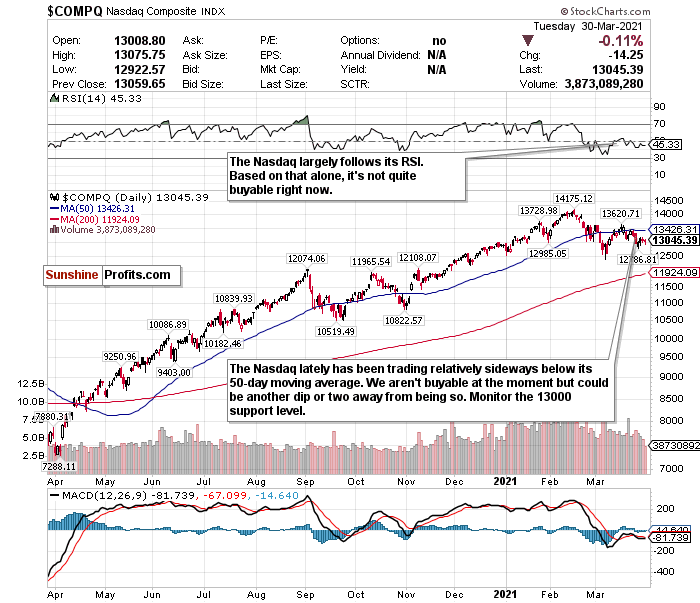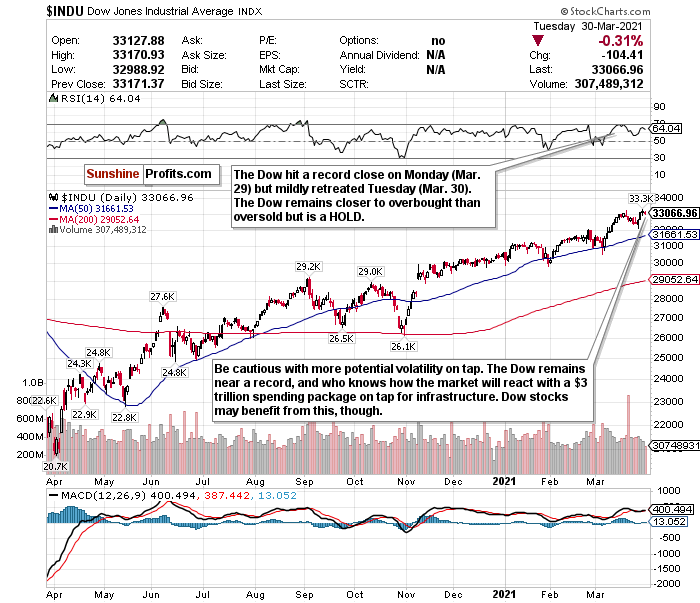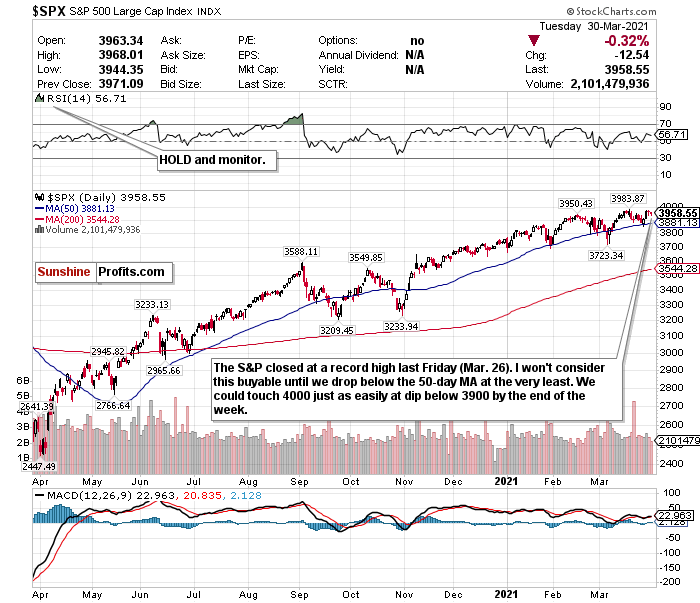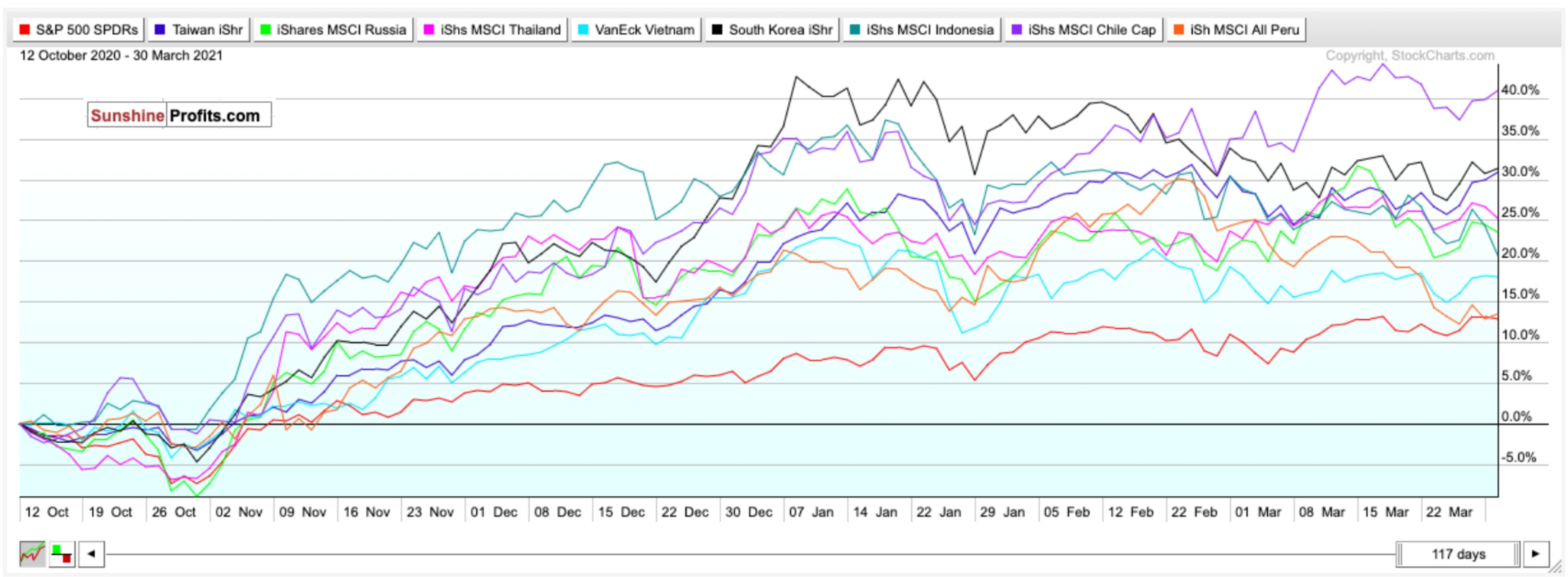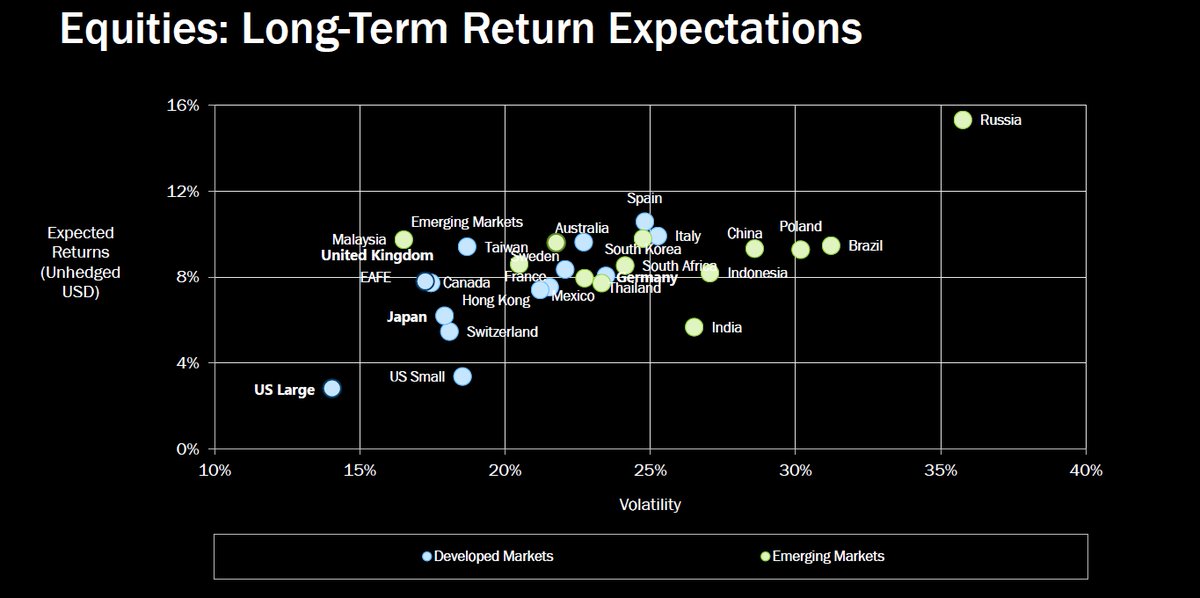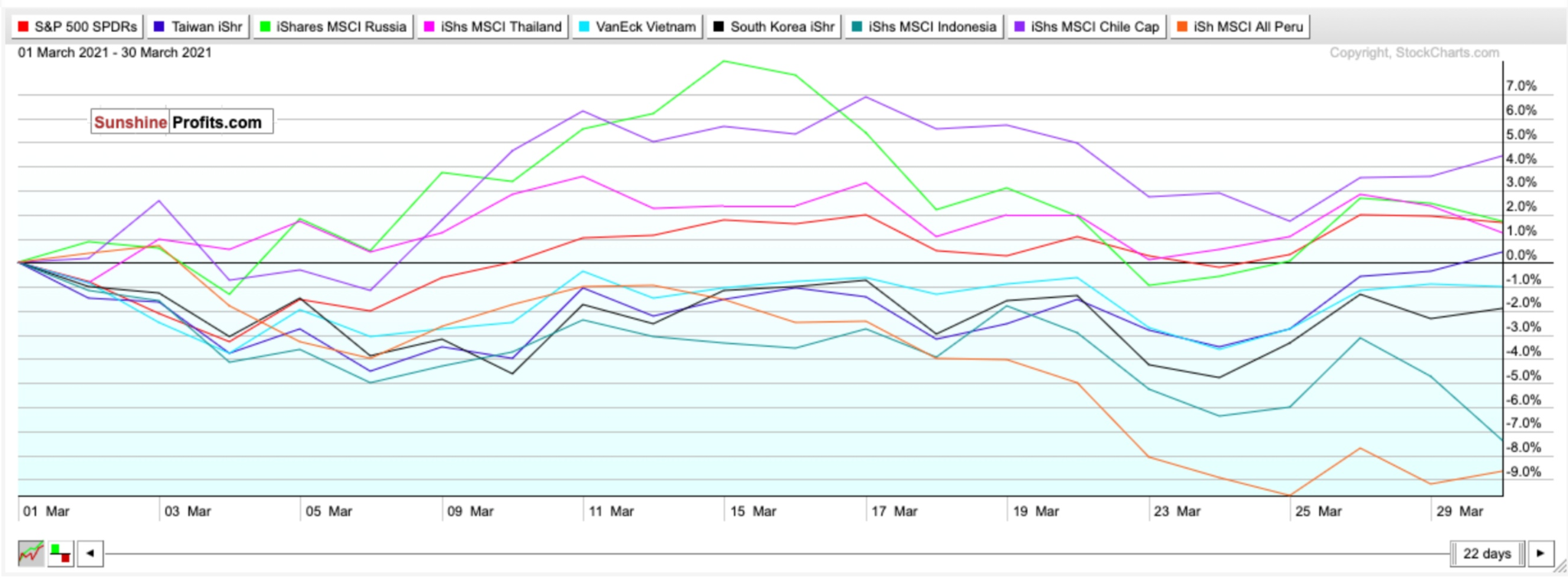End of the month and first quarter of 2021. Is time going fast or slow? Markets have been moving at a dizzying pace to start the year.
As a side note, this will be our last newsletter for this week because the market is closed on Friday (Apr. 2).
The first quarter of 2021 is officially almost finished. Time flies when you’re having fun, right? While a broad correction did not happen by now, as I expected, the Nasdaq did enter correction territory twice since February. Despite the Nasdaq’s muted moves on Tuesday (Mar. 30), it’s right on the edge of its third foray into correction territory.
The market themes remain. There is still as much uncertainty for tech stocks today as there were at the start of March. Until there’s some clarity on inflation and bond yields, I can’t foresee this ending anytime soon.
Consider this too. President Biden is about to unveil a $2 trillion infrastructure plan during Wednesday’s session (wasn’t it supposed to be $3 trillion?). While this is great for America’s crumbling infrastructure, let’s be honest- does this economy, while recovering, need anymore spending?
Plus, how do you think he will pay for this? Hiking taxes- namely corporate taxes. Those gains that high growth stocks saw after Trump cut corporate taxes in 2017 could very well go away. The market may have priced in a lot of optimism. It may have already priced in some pessimism from potential inflation. But one thing it has not priced in is a possible tax hike.
This concerns me.
Rising bond yields + Rising taxes= A double whammy of bad news for tech stocks.
However, despite the “what ifs,” for now, three pillars remain in motion as a strong backdrop for stocks:
- Vaccines
- Dovish monetary policy full of stimulus
- Financial aid
My goal for these updates is to educate you, give you ideas, and help you manage money like I did when I was pressing the buy and sell buttons for $600+ million in assets. I left that career to pursue one to help people who needed help instead of the ultra-high net worth.
With that said, to sum it up:
The market has to figure itself out.
More volatility is likely, and we could experience more muted gains than what we’ve come to know over the last year. Inflation, interest-rate worries, and the potential for tax hikes should be the primary tailwinds. However, a decline above ~20%, leading to a bear market, appears unlikely for now.
Hopefully, you find my insights enlightening. I welcome your thoughts and questions and wish you the best of luck.
Nasdaq- Mounting Concerns
Figure 1- Nasdaq Composite Index $COMP
The last time I switched my Nasdaq call to a BUY on Feb 24, that worked out very well. Before, I used the RSI and the 13000 support level as my criteria for calling the Nasdaq buyable. Now, I’m not so sure. I’m growing increasingly concerned about not only bond yields but the prospects of tax hikes.
This infrastructure plan, while needed, could be the final push inflation needs to REALLY come back, for bond yields to pop even faster and for tax hikes to come. Potential tax hikes, though, are what really worry me about tech stocks.
I also worry about IPOs and SPACs. A different IPO or SPAC enters the market on what seems to be an almost weekly basis now. It’s comparable to the dot-com bust, and I don’t like it one bit. If this trend continues, we could see oversupply in the market and a shortage in demand. That is terrible news for stocks.
I remain bullish on tech sectors like cloud computing, e-commerce, and fintech, and previously said we could be a dip or two away from being buyable. But I’ve grown a bit more concerned over the last few sessions.
HOLD, and see what happens over subsequent sessions. Monitor the infrastructure bill, tax hikes, and IPO/SPAC market. Research emerging tech sectors and high-quality companies.
For an ETF that attempts to correlate with the performance of the NASDAQ directly, the Invesco QQQ ETF (QQQ) is a good option.
The Dow Jones- Still Almost Overbought
Figure 2- Dow Jones Industrial Average $INDU
The Dow Jones remains red hot, despite a little drop on Tuesday (Mar. 30). I just don’t think it’s buyable. We’re about 300 points away from its record high with an RSI over 64.
Having Dow exposure can be valuable. The index has many strong recovery cyclical plays that should benefit from what appears to be a robust economic recovery and reopening. The Dow could also be quite beneficial as a hedge against volatile growth stocks. You won’t see bond yields spooking this index as much.
But at this level, it’s probably better to HOLD, let it ride, and maybe even consider trimming some profits on another up day.
Many analysts believe the index could end the year at 35,000 or higher, and the wheels are in motion for a furious rally. But you could do better for a buyable entry point.
From my end, I’d prefer to stay patient and vigilant.
My call on the Dow stays a HOLD.
For an ETF that aims to correlate with the Dow’s performance, the SPDR Dow Jones ETF (DIA) is a reliable option.
Next up for the S&P- 4000?
Figure 3- S&P 500 Large Cap Index $SPX
On the one hand, according to Sanford C. Bernstein strategists, the S&P 500 index could more than double by the end of the decade and reach 8,000.
Historically, we could really be at a strong entry point for the long-term too. We’re a week away from the bull market’s first birthday, and historically, S&P 500 bull markets since 1957 on average resulted in price gains of 179% and lasted an average of 5.8 years.
Because the S&P has risen just about 75% in a year, if history tells us anything, we’re just getting started.
On the other hand, we’re right around the S&P 500’s record high and so close to the 4000-level that I can taste it. I just don’t know it will happen this week. I don’t see this as a buyable index at the moment, and its streakiness scares me. I’d instead prefer a dip below the 50-day moving average, but even that is a questionable buy level.
But, right now, the S&P 500 is a complex index to call. It’s probably better to monitor its swings for now until it hits a buyable level.
Consider this also. This index is about to get a heck of a lot more volatile. Tesla (TSLA) joined the index at the end of 2020, and Penn National Gaming (PENN) is about to follow suit. While this could make things a bit more exciting, it could also make things a bit more unpredictable.
Unless I see some sort of buy or sell signal for the S&P 500, I think we’ll keep playing this HOLD game.
HOLD for now, but be prepared to either BUY or SELL depending on its moves. For an ETF that attempts to directly correlate with the performance of the S&P 500, the S&P 500 SPDR ETF (SPY) is a great option.
Beware of Inflation
This fear is not going to go away anytime soon. If and when President Biden’s infrastructure spending bill passes, watch out.
Bond yields and inflation fears have replaced the virus as the most significant market mover by far.
We need some clarity- is inflation really coming back, or is all this fear overblown?
On the one hand, all of this stimulus coupled with a dovish Fed make inflation a foregone conclusion. The Fed is clearly going to tolerate inflation, and we could see it hit 2.2% by the end of the year- about 20 basis points ahead of the Fed’s benchmark target. Plus, in the last year, the U.S. national debt has risen by more than $4 trillion. With more spending on the horizon, this will only get higher.
Plus, Moody’s Analytics chief economist Mark Zandi feels that investors have not fully grasped that inflation is “dead ahead” and are grossly underestimating its seriousness and effect on every sector in the market.
On the other hand, BoA, in a March 10 note, described inflation as “well-contained.” The bank also said that inflation fears would subside by the end of the year and expects CPI inflation to be well shy of the Fed’s 2% target and hit 1.7% by the year’s end.
Days ago, inflation data also came in tamer than expected.
But the fact of the matter is, with more spending on the horizon and a Fed that appears dead set on keeping rates at 0% through 2023 despite the warning signs, watch out. This economic pace won’t be sustainable.
According to the Financial Times, a mounting number of businesses are already griping about supply-chain bottlenecks, increasing raw material costs, and higher labor expenses.
Plus, the 10-year break-even rate, a market measure of inflation, climbed to its highest level since 2013 last week, at 2.36%.
The signs are there right now and are becoming increasingly alarming.
“The rich world has come to take low inflation for granted. Perhaps it shouldn’t.” -The Economist.
As hedges against inflation, consider rereading my REIT special from last Friday (March 26).
Consider also BUYING the SPDR TIPS ETF (SPIP), the Invesco Optimum Yield Diversified Commodity Strategy No K-1 ETF (PDBC), and the iShares Cohen & Steers REIT ETF (ICF).
Mid-Term/Long-Term
Add Emerging Market Exposure- Period
Figure 5- SPY, EWT, ERUS, THD, VNM, EWY, EIDO, ECH, EPU comparison chart- Oct. 12, 2020-Present
Since October 12, 2020, the SPDR S&P 500 ETF (SPY) has gained around 12.85%.
Mind you, the S&P 500 is almost at 4000 and hovering around an all-time high. Yet, all of my top emerging markets picks for this year have outperformed the SPY since then. The only one that comes close is my Peru ETF pick (EPU), which still outperformed the SPY by almost 0.7%.
Consider this too.
With inflation on the horizon, a surge in commodity prices combined with shifting demographics could send other emerging markets upwards long-term. Plus, with birth rates plummeting during the pandemic in developed markets, it could mean long-term upside for emerging markets.
PWC echoes this sentiment and believes that emerging markets (E7) could grow around twice as fast as advanced economies (G7) on average in the coming decades.
For 2021, the following are my BUYs for emerging markets and why:
iShares MSCI Taiwan ETF (EWT)- Developing country, with stable fundamentals, diverse and modern hi-tech economy, regional upside without China’s same geopolitical risks.
iShares MSCI Thailand ETF (THD)- Bloomberg’s top emerging market pick for 2021 thanks to abundant reserves and a high potential for portfolio inflows. Undervalued compared to other ETFs.
iShares MSCI Russia Capped ETF (ERUS)- Bloomberg’s second choice for the top emerging market in 2021 thanks to robust external accounts, a robust fiscal profile, and an undervalued currency. Red-hot commodity market, growing hi-tech and software market, increasing personal incomes. Russian equities may also have potential upside north of 35%.
Figure 6- Equities: Long-Term Return Expectations Developed Markets/Emerging Markets
VanEck Vectors Vietnam ETF Vietnam (VNM)-Turned itself into an economy with a stable credit rating, strong exports, and modest public debt relative to growth rates. PWC believes Vietnam could also be the fastest-growing economy globally. It could be a Top 20 economy by 2050.
iShares MSCI South Korea ETF (EWY)- South Korea has a booming economy, robust exports, and stable yet high growth potential. The ETF has been the top-performing emerging market ETF since March 23.
iShares MSCI Indonesia ETF (EIDO)- Largest economy in Southeast Asia with young demographics. The fourth most populous country in the world. It could be less risky than other emerging markets while simultaneously growing fast. It could also be a Top 5 economy by 2050.
iShares MSCI Chile ETF (ECH)- One of South America’s largest and most prosperous economies. An abundance of natural resources and minerals. World’s largest exporter of copper. Could boom thanks to electric vehicles and batteries because of lithium demand. It is the world’s largest lithium exporter and could have 25% of the world’s reserves.
iShares MSCI Peru ETF (EPU)- A smaller developing economy but has robust gold and copper reserves and rich mineral resources.
Now that March is coming to a close, let’s see how my emerging market picks performed for the month.
Figure 7- SPY, EWT, ERUS, THD, VNM, EWY, EIDO, ECH, EPU comparison chart- March 1-Present
It was a rough month for Peru and Indonesia. Peru, because of its mineral reserves, was rocked by volatile commodity prices. The country is also in the midst of some political turmoil and a very nasty wave of COVID.
Indonesia is also in a volatile part of the world right now. While it is not Myanmar, the crisis happening there is inevitably involving Indonesia because of its proximity. Indonesia also recently saw a fierce fire at a major oil refinery.
The best performing ETF though oddly enough, was Chile. Usually, Chile and Peru perform similarly because they are in a geographically similar region and have economies based on mining and materials. The difference, though, is Chile is one of the most politically stable countries in the area and has typically led the region in economic growth. With a reopening world, its financial outlook for 2021 and 2022 has only improved too.
Outside of the aforementioned country-specific ETFs, you can also BUY the iShares MSCI Emerging Index Fund (EEM) for broad exposure to Emerging Markets.
Long-Term
Over a year out from the bottom, I remain more convinced than ever that economic recovery is going better than expected. Vaccines for any adult who wants them in America are right around the corner. But it’s a blessing and a curse if this recovery goes “too well.”
Continue to pay attention to complacency, overvaluation, bond yields, and especially inflation.
But now, pay extra close attention to this new infrastructure bill and potential tax hikes.
Time will tell what happens. There could be more short-term swings. But the economic climate is reopening, and things look a bit sunnier than they did at this time a year ago.
While I don’t foresee the same gains that we saw since March 23, 2020, 2021 should still be a solid year for stocks despite some choppy waters.
Summary
There are some concerns, but the overall backdrop right now remains favorable for stocks.
I’m going to list once again the top lessons learned from a year ago, as eloquently written by Ethan Wolff-Mann of Yahoo! Finance.
- ‘Every crisis is the same’
- Panic can hurt a portfolio
- You genuinely don’t know what’s going to happen
- Rebalancing comes out as a huge winner
Learn these lessons from a year ago—play volatility to your advantage. Be cautious but not scared, and do not try to time the market.
Most importantly, though:
NEVER TRADE WITH EMOTIONS.
Consider this too. You can sit out and be scared and wait for the perfect buying opportunity all you want. But as we now sit over a year out from the market’s bottom, let’s see the returns you’d see if you bought ANY of these index-tracking ETFs on March 23, 2020, when it appeared the world was ending: Russell 2000 (IWM) up 121.76%. Nasdaq (QQQ) up 85.55%. Dow Jones (DIA) up 80.86%. S&P 500 (SPY) up 79.89%.
Nobody knows “where” the actual bottom is for stocks. However, in the long-term, markets always move higher and focus on the future rather than the present.
To sum up my calls:
I have BUY call for:
- The iShares Russell 2000 ETF (IWM)
I have HOLD calls for:
- The Invesco QQQ ETF (QQQ),
- the SPDR S&P ETF (SPY), and
- the SPDR Dow Jones ETF (DIA)
I also recommend selling or hedging the US Dollar and gaining exposure into emerging markets for the mid-term and long-term.
I have BUY calls on:
- The iShares MSCI Emerging Index Fund (EEM),
- the iShares MSCI Taiwan ETF (EWT),
- the iShares MSCI Thailand ETF (THD),
- the iShares MSCI Russia ETF (ERUS),
- the VanEck Vectors Vietnam ETF (VNM),
- the iShares MSCI South Korea ETF (EWY),
- the iShares MSCI Indonesia ETF (EIDO),
- the iShares MSCI Chile ETF (ECH),
- and the iShares MSCI Peru ETF (EPU)
Additionally, because inflation shows signs of returning, and I foresee it potentially worsening as early as Q3 or Q4 2021...
I have BUY calls on:
- The SPDR TIPS ETF (SPIP),
- the Invesco Optimum Yield Diversified Commodity Strategy No K-1 ETF (PDBC), and
- the iShares Cohen & Steers REIT ETF (ICF)
Thank you.
Matthew Levy, CFA
Stock Trading Strategist


